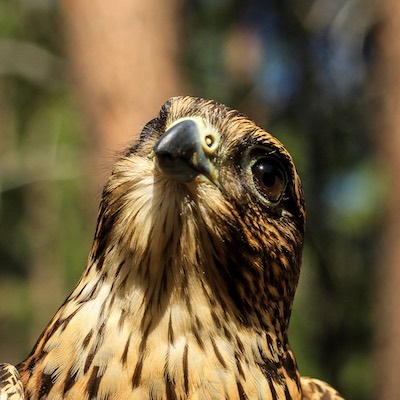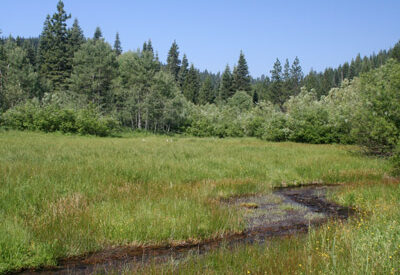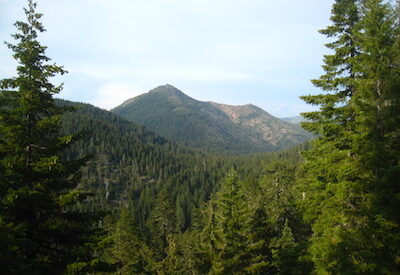Merlin

QUICK FACTS
Latin Name: Falco columbarius
Status: No special status
Population: Canada and Alaska (summer). Southwest U.S. and Central America (winter)
Diet: Mostly smaller birds, occasionally small mammals
Weight: 5.6–8.5 ounces
Length: 9.4–11.8 inches
About the Merlin
Merlins are small members of the falcon family, but unlike larger falcons, they fly using rapid wingbeats in place of gliding. Given their small size, they used to be referred to as “lady hawks” in the middle ages.
When they hunt, Merlins either perch on a treetop and scan the area for prey or, once prey is spotted, pursue their target at top speed. When they are in pursuit of prey, Merlins can reach speeds over 30 miles per hour. They can be difficult to spot with the naked eye at top speed.
Female Merlins lay 4-5 eggs at a time, however, these animals do not build their own nests. Instead, merlins take over old nests built by hawks, crows, ravens, etc. Therefore, nest size can vary greatly depending on which species built the nest in use. Merlins rarely reuse a nest during the subsequent season.
For more information: The Cornell Lab of Ornithology
Photography: Image #1 by U.S. Fish and Wildlife Service – Pacific Region, Image #2 by Jon Nelson.
HABITATS
The merlin lives in the following habitats:
How you can help this species
Help conserve America's forests.
Stay in the know. Get the latest news.
Conservation PROJECTS WITH
Merlin HABITATS
The Pacific Forest Trust is dedicated to preserving natural habitats and forest systems where these animals can thrive. Explore some of our conservation projects and easements in and around merlin habitat.




